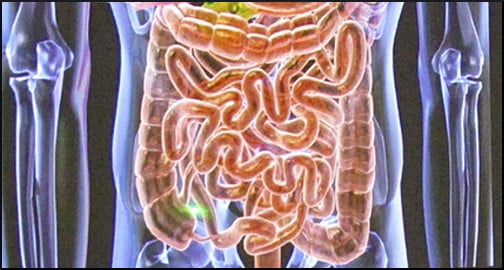 The human digestive tract has its own ecosystem inhabited by trillions of beings whose ability to influence our health appears stronger with every new study. In particular, the organisms inside the gut seem to wield uncanny power over the presence or absence of chronic inflammation in the body.
The human digestive tract has its own ecosystem inhabited by trillions of beings whose ability to influence our health appears stronger with every new study. In particular, the organisms inside the gut seem to wield uncanny power over the presence or absence of chronic inflammation in the body.
Much has been written about the gut microbiome and its role in human obesity, but what do all the tantalizing hints and suggestions add up to? Earlier this year, the journal Childhood Obesity published a lengthy interview with Dr. Noel T. Mueller, who is a postdoctoral research fellow at Columbia University Medical Center. It’s very promising title is “The Gut Microbiome and Childhood Obesity: Connecting the Dots.”
Childhood Obesity News has referenced that interview in several posts, including “The Gut Microbiome as Obesity Villain,” “Are We Cursed with Obesity from Birth?” and “Is Obesity Doom Escapable?”
It seems that many researchers perceive connections to be made between dots, and sometimes the connection takes a considerable amount of explaining. The ways of the human organism are often mysteriously convoluted. Sebastijan Veselic, whose short-version bio is “BSc in Psychology, currently doing a MSc in Cognitive science,” offers an explanation tailored for non-professionals:
Inflammation by itself is a natural defensive response of our body to different harmful stimuli. This response involves some key players which include host cells, blood vessels, and proteins. It’s characterized as an adaptive immune response to tissue injury or infection.
The body protects itself from the spread of harmful substances. It has to get rid of cells damaged by the invader, and of the conquered invader itself. Live invaders excrete and dead ones rot, adding to the poisonous effluvia and detritus that a battle leaves behind. Also, the body has to fix up the battlefield, fill in the trenches and plant flowers. Veselic describes how white blood cells and plasma proteins rush to the area:
The process is initiated by two types of white blood cells (macrophages and mastocytes) and by dendritic cells (among others)…Certain components of the inflammation response are capable of destroying our own healthy tissue where the response is initiated. Moreover, an inappropriate inflammatory response when there are no foreign (dangerous) substances to fight off leads to autoimmunity.
This, he says, is why the immune system has to keep a close eye on things—to avoid damaging the person’s healthy parts. A certain number of cells are always dying, but chronic inflammation kills many additional cells, and there is a lot more waste product to clean up.
In chronic, low-level inflammation, the body is attacking itself all the time. What triggers it to do that? According to Veselic, cells that don’t work right any more. Why do cells stop functioning optimally? Increased caloric consumption, constantly high blood sugar levels, and oxidative stress. (These are discussed in much more detail in the linked article.)
Maybe this is the core question: What brings on that “inappropriate inflammatory response when there are no foreign (dangerous) substances to fight off?” The mechanism has a lot of moving parts, and the cause and effect relationships between any and all of the elements are not clearly delineated. Sometimes two factors neither cause nor are caused by each other (as far as we know), but they can join forces and wreak havoc with synergistic fervor.
(To be continued…)
Your responses and feedback are welcome!
Source: “How are Chronic Inflammation and Obesity Connected?,” Healthyeatingharbor.com, 05/05/15
Image by Newtown grafitti

 FAQs and Media Requests:
FAQs and Media Requests: 











